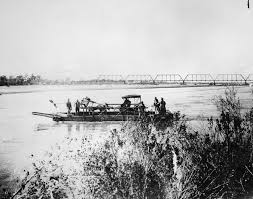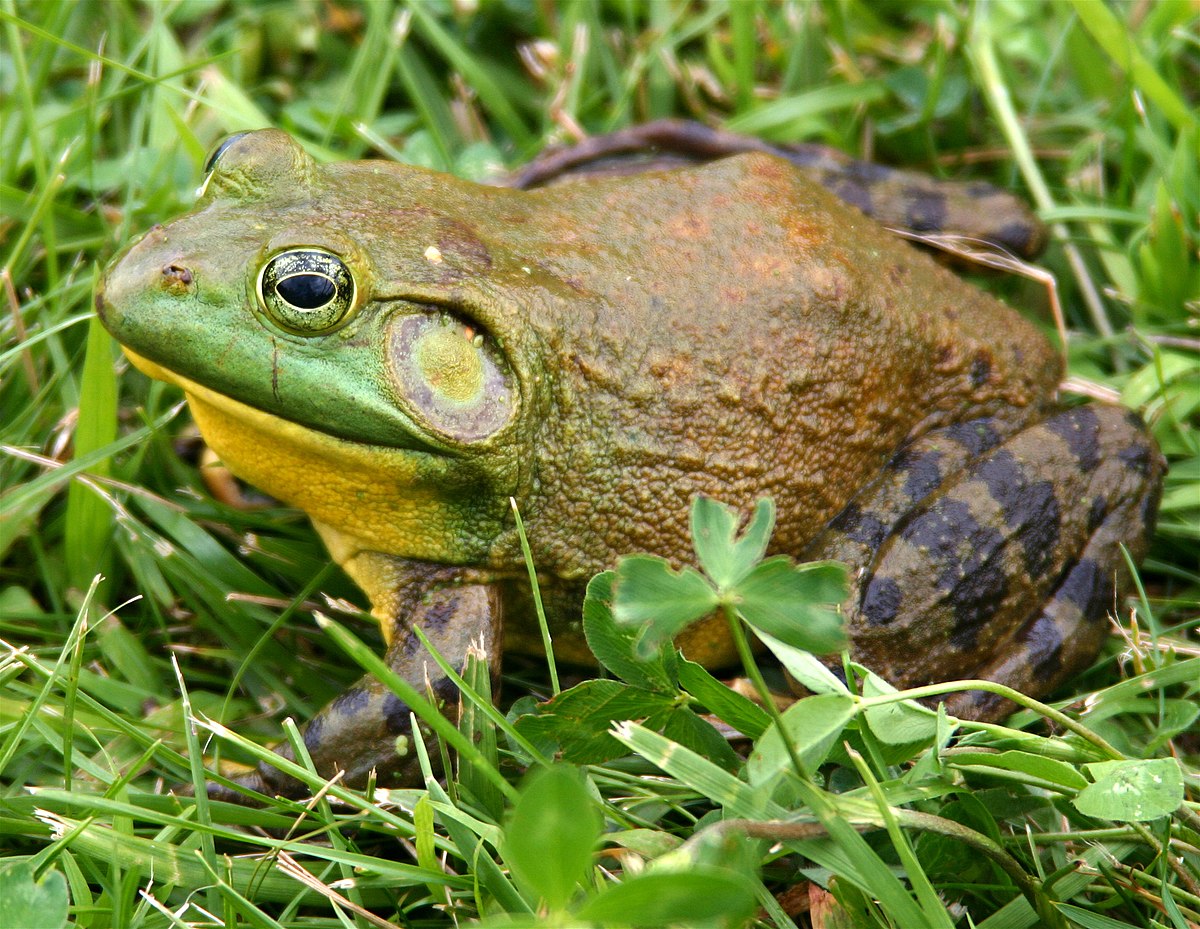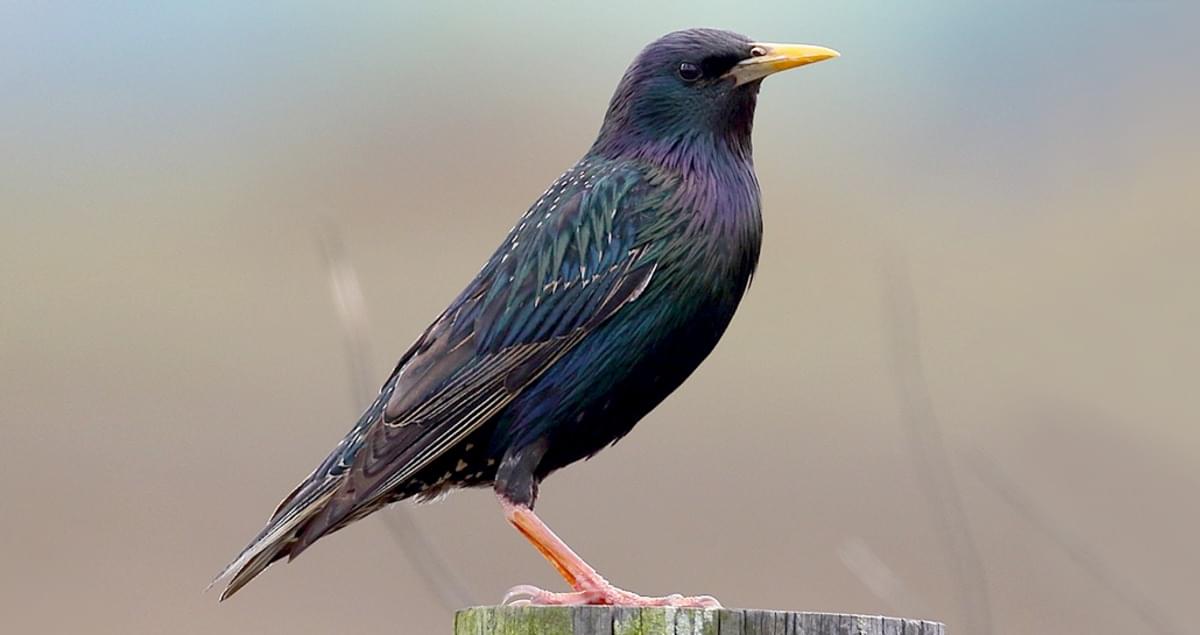Hohokam Irrigation Canals, Salt River
by Claudia Kirscher
Liberty Wildlife Volunteer
When looking out at the Salt River, one cannot help but wonder what purpose has this land served in the past? What history and events traveled across these banks? Whose footsteps do we walk in?
The Hohokam lived in this area for about 1500 years, but abandoned their settlements during the 15th century for unknown reasons. They built extensive irrigation canals branching off the Salt River to support their crop of beans, squash, corn, and cotton.
The canals were perfectly laid out to achieve a downhill gradient of 1 to 2 feet per mile. Many of the canals were massive in size, one measured 15 feet deep and 45 feet wide. By AD 1300, the Hohokam irrigation systems supported the largest population in the per-colonization Southwest, stretching over 500 miles. These canals were directly responsible for the settlement of Phoenix.

“Around 1860, rumors of gold in central Arizona brought prospectors to the area. Jack Swilling, an ex-Confederate cavalryman, noticed the abandoned Hohokam canals. He started the Swilling Irrigating and Canal Company in 1867, intending to use the canals to harvest water from the Salt River to irrigate crops to sell to the miners at the Vulture Mine in Wickenburg and U.S. Cavalry stationed at Fort McDowell. By 1868, he and sixteen partners had harvested their first crops. That year, a small settlement called ‘Phoenix’ appeared.”
In 1865, Fort McDowell had been established Northeast of present downtown Tempe on the upper Salt River. New permanent communities sprang up farther down the Salt River that supported the Fort with food and animal feed. Farm fields flourished along the river. Just upriver from the Liberty Wildlife campus, one settlement became “Hayden’s Ferry,” named after a ferry service operated by Charles Hayden. This ferry became the key river crossing in the area during the 1860’s to 1870’s.

If only the Salt River could speak and share the history and stories it has seen along the little stretch of river that borders Liberty Wildlife’s campus. As you walk around the property, think back on those who were here before Liberty came along to re-purpose, recycle, and re-use this land.
The Great American Outdoors Act
by Gail Cochrane
Liberty Wildlife Volunteer
In early August Congress thrilled conservationists and outdoor enthusiasts by passing the Great American Outdoors Act. This is the biggest land conservation legislation passed in a generation.
The legislation has two parts. A National Park and Public Lands Legacy Restoration Fund will provide up to $9 billion over the next five years to fix deferred maintenance at national parks, wildlife refuges, forests, and other federal lands, with $6.5 billion earmarked specifically to the 419 national park units.

Since 1980 visitor attendance at national parks has increased by 50 percent, but the parks’ budgets have stayed flat. Thus, the backlog of maintenance for road repair, trails, campgrounds, fire safety, and visitor infrastructure has grown to $12 billion dollars, causing serious degradation to the parks themselves.
The second part of the Great American Outdoors Act is a guarantee of $900 million per year in perpetuity for the Land and Water Conservation Fund – a conservation program funded by royalty payments from offshore oil and gas drilling in federal waters. The program has been chronically underfunded by Congress despite placing no burden on taxpayers. The LWCF helps fund the four main federal land programs; National Parks, National Forests, Fish and Wildlife, and BLM.
Since it was signed into law by President Lyndon Johnson, LWCF has been used to preserve millions of acres of land from coast to coast, including everything from the Grand Canyon to local parks, historic sites and trails. The LWCF has supported at least one project in nearly every county in every state across America. Priorities are grants for outdoor recreation in cities targeting low to moderate income neighborhoods underserved in the way of parks and other outdoor recreation resources.
The Fund is also used to buy inholdings—pieces of private land within the borders of national parks, forests, wildlife refuges and other protected sites—to help make public lands “whole” and simpler for agencies to manage. This makes it easier to protect habitat, ensure safe migration corridors for wildlife, expand opportunities for outdoor recreation and safeguard historic sites and resources.
Despite virtual gridlock in Congress concerning many issues, The Great American Outdoors Act passed easily with broad bipartisan support. Although many elected officials of both parties have long supported conservation, the unusual show of bipartisanship that led to enact this legislation is largely due to the political and economic consequences of the COVID-19 pandemic.
Visitor spending in and around national parks — which are mostly located in the West — contributed more than $40 billion to the U.S. economy last year and supported 340,500 jobs. But these communities are now struggling and many of the jobs related to tourism have been lost. The GAOA is expected to create more than 108,000 new jobs to repair park infrastructure, including access roads and bridges in the adjacent communities.
The pandemic has also led Americans to rediscover the outdoors. The national parks not only provide economic benefits but also health and enjoyment. People now appreciating the outdoors as never before, are calling on elected representatives to provide adequate financial support.
This information in this article is largely based on an interview with Linda Bilmes that appeared in the Harvard Gazette. Bilmes served on the National Parks Second Century Commission and on the U.S. Department of Interior National Parks Advisory Committee and is co-author of “Valuing U.S. National Parks and Programs: America’s Best Investment”.
Invaders from Planet Earth
by Natasha Loving
Liberty Wildlife Intern
While not as widely discussed as dangers like deforestation and pollution, invasive species are among the leading threats to wildlife. 42% of threatened or endangered species are at risk due to invasive species. Some assume all non-native species are invasive, but “non-native” is a neutral term. According to Executive Order 13112, non-native species are “invasive” when their “introduction does or is likely to cause economic or environmental harm or harm to human health”. Unfortunately for us, Arizona has its fair share of those.

One of the state’s most notorious invaders is the bullfrog. Native to the eastern U.S., these “great whites” of Arizona’s waters were introduced to the West because, to put it simply, folks like eating frog legs. Unfortunately, bullfrogs are voracious predators and prolific reproducers. They have reduced the populations of a variety of native species, decimating the Chiricahua leopard frog. Bullfrogs lay up to 20,000 eggs in a single clutch, and their tadpoles are less appetizing to AZ fish than native tadpoles. To top it all off, bullfrogs have a propensity for travel and carry pathogens that native amphibians are unequipped to handle. These factors have prompted the intervention of the state and organizations like the FROG Conservation Project.
Arizona is also home to quite a few invasive birds. The European starling is native to, you guessed it, Europe, and is one of the world’s most successful invasive species. They were introduced to North America in 1890 as part of a plan to introduce every species of bird mentioned in Shakespeare’s works. They’re now found in a wide variety of habitats across the country. They will often destroy the eggs and kill the nestlings of native species. Starlings are cavity nesters that not only out-compete native birds but may toss out nesting pairs of native species, like Gila woodpeckers, from their saguaro homes. Their abundance and ability to adapt to a range of urban and rural spaces have made them difficult to combat or control.

Animals aren’t the only invaders. A loathed invasive species is buffelgrass or, as the National Park Service likes to call it, the “archenemy of the Sonoran Desert”. A native of Africa, this grass was introduced for cattle forage and erosion control; the unforeseen consequences have been devastating. Buffelgrass grows quickly, densely, and extensively. It competes with and crowds out native species. Most significantly, it contributes to disastrous wildfires. The open canopy of our desert means that natural vegetation is sparse, and fire is typically unable to spread effectively. Buffelgrass serves as heavy, continuous fuel and causes flames to travel at an accelerated rate. Additionally, native species did not evolve with fire and are therefore not adapted to it. While fires ravage native plants, the fire-evolved buffelgrass thrives under repeated burnings. A lot of work is being done to control, manage, and prevent the spread of buffelgrass.
As always, change starts at home. Most invasive species are spread by humans, often unintentionally. Learn the invasive species in your area, how to identify them, and what to do if you find them. Replace invasive plants with native ones. Regularly clean outdoor gear; species will often hitch a ride on boots, boats, tires, and other equipment. In general, be aware of the tremendous impact you can have on your environment because, right now, Martians are the least of our problems.
Kid Stuff
By Carol Suits

Nurturing Nature
What is migration?
When animals start to migrate, kids ask all kinds of questions. Do you ask these questions?
What is migration? Where are the animals going? When will they leave? What about returning? Why do some birds fly in the shape of a “V”? Let’s answer some of these questions.
Migration is when animals move from one place to another at certain times of the year. This video shows examples of migrating animals.
https://www.youtube.com/watch?v=hMAS4SdPj-w
Why do animals come back after going to warm places in winter? Meet Doug! He explains it all in this video.
https://www.youtube.com/watch?v=ljrKsuXYwmU
Why do birds fly in a “V”?

Try this experiment:
- Cut long strips of construction paper and draw some little birds on them.
- Next place the strips in front of a fan and try to keep the paper flat so the birds fly next to each other.
- Do the sides of the paper keep blowing back?
- Next, fold the construction paper strips in half, making a “V” shape.
- Does the wind flow easier over the paper? There is less wind resistance.
- Do during migration birds fly in a “V” because it takes less energy to travel great distances.
- Watch the birds fly in a “V” here and watch how they switch leaders! https://www.youtube.com/watch?v=fd0-lJw251g
Want to know more about migrating birds? September 12th-20th is International Hawk Migration Week. Check out Liberty Wildlife’s Facebook page https://www.facebook.com/liberty.wildlife/ for more information.


